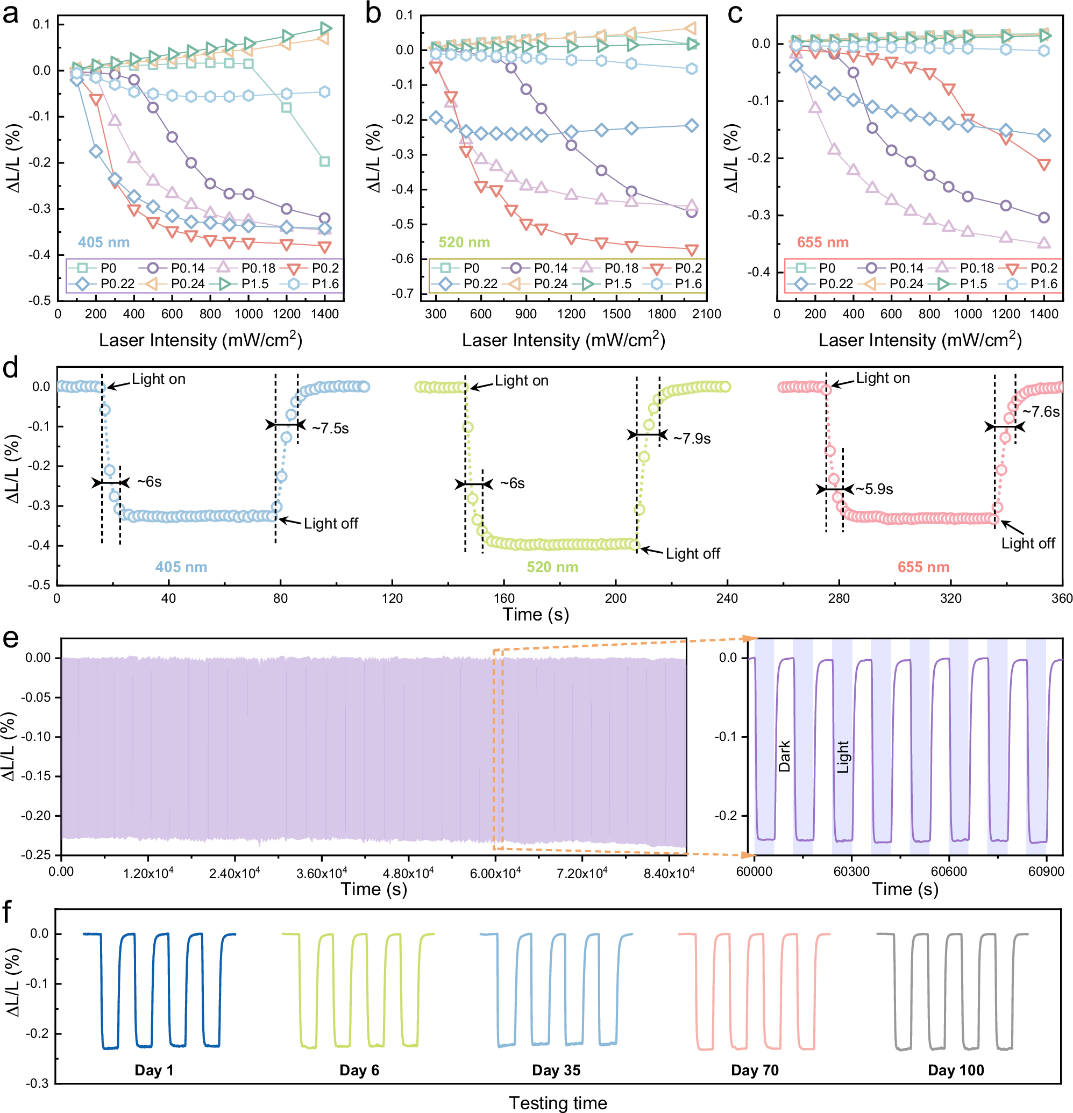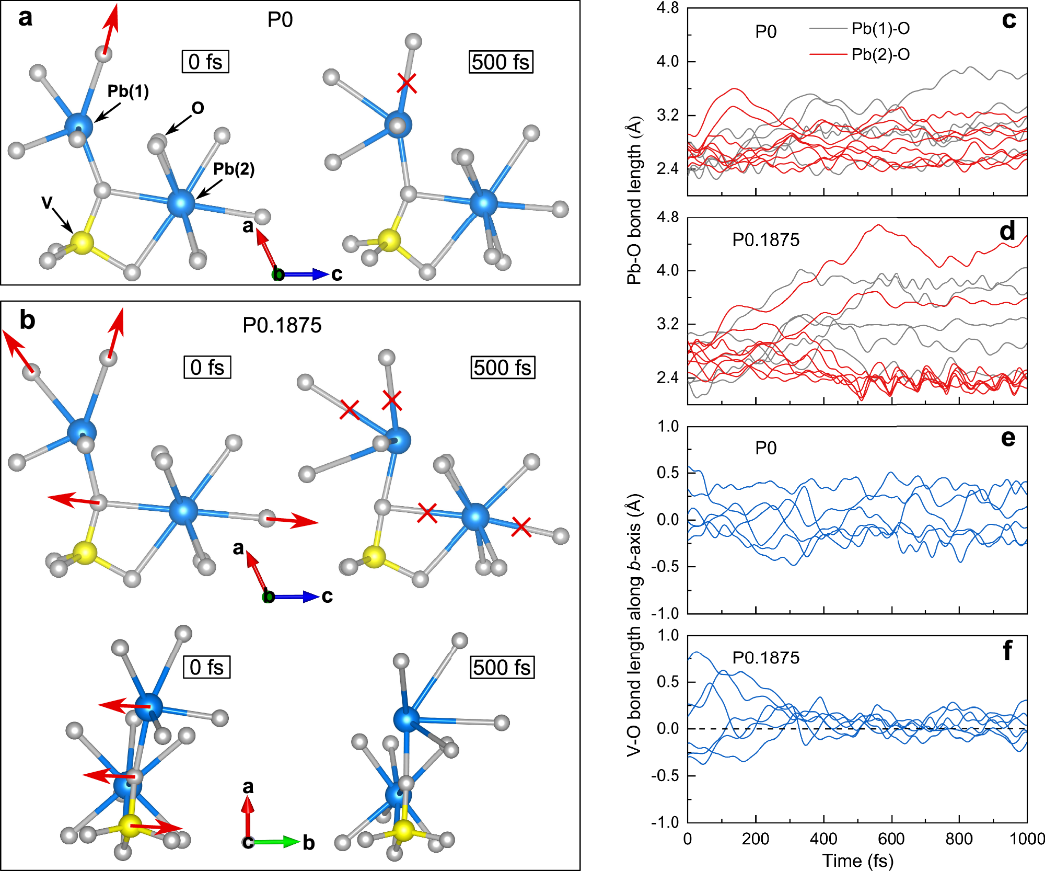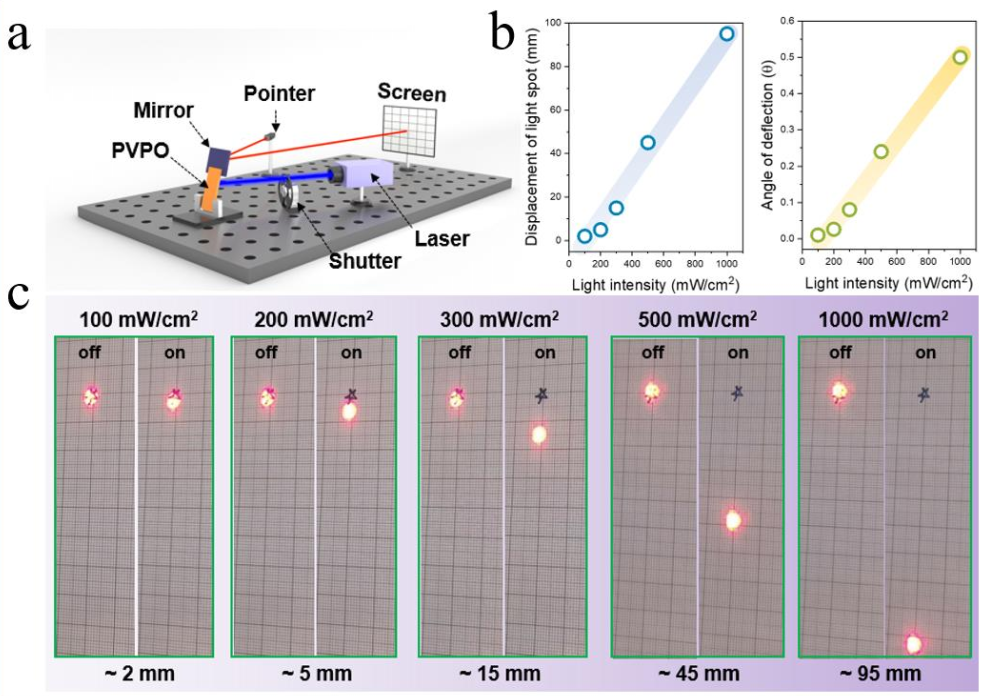SICCAS scientists Achieve New Breakthrough in High-Performance Inorganic Photostrictive Materials by Polymorphic Phase Boundary Design
The photostrictive effect is a phenomenon in which materials undergo non-thermal deformation under light illumination, enabling the direct conversion of light energy into mechanical strain. This effect holds significant promise for opto-electromechanical applications. Although researchers have observed this effect in various systems, including semiconductors, ferroelectric materials, liquid crystal polymers, and hybrid perovskites, the underlying mechanisms and performance vary markedly across different materials. To date, the photostriction of most inorganic photostrictive materials is generally below 0.01%, which is several orders of magnitude lower than the electrostrain (>0.1%) of ferroelectric materials, making it difficult to meet the requirements of practical applications. Developing high-performance inorganic photostrictive materials has thus remained a longstanding challenge. The research team led by Yi Zhiguo from the Shanghai Institute of Ceramics, Chinese Academy of Sciences, first discovered the phenomenon of light-induced phase structural evolution in lead vanadate (Pb₃V₂O₈) ceramics, accompanied by a remarkable photostriction of up to 0.4%, comparable to the inverse piezoelectric effect in piezoelectric materials (Matter 2023, DOI: 10.1016/j.matt.2022.09.028). However, achieving the light-induced phase transition in Pb₃V₂O₈ ceramics requires extremely high light intensities, resulting in a low photostrictive efficiency. Meanwhile, significant photothermal effects further complicates the mechanism analysis of the light-induced phase transition and photostrictive phenomenon and is not conducive to the development and design of photostrictive devices.
Recently, the collaborative team of Yi Zhiguo from the Shanghai Institute of Ceramics, Chinese Academy of Sciences, and Luo Junwei from the Institute of Semiconductors, Chinese Academy of Sciences, has made a new breakthrough in Pb₃V₂O₈-based photostrictive ceramics. By introducing phosphorus (P) doping to modulate the phase transition temperature and constructing a polymorphic phase boundary (PPB) near room temperature, the team successfully reduced the light intensity threshold for photoinduced phase transition, achieving a photostriction exceeding 0.3% and a high photostrictive efficiency of up to 10⁻¹⁰ m³/W. Even at a reduced light intensity of 200 mW/cm², the material still delivered a photostriction above 0.1%, which is comparable to the electrostrain of ferroelectric materials. This achievement not only overcomes the performance limitations of conventional photostrictive materials but also significantly reduces the dependence on high light intensities and minimizes the photothermal effect, paving the way for practical applications.
Experimental results revealed that increasing P content gradually lowered the transition temperature from the room-temperature monoclinic phase (β-phase) to the high-temperature rhombohedral phase (γ-phase), forming a PPB region where the two phases coexist. Within this region, the phase composition exhibits extreme sensitivity to optical excitation. Samples in the PPB region exhibit significant photo-induced contraction under 405, 520, and 655 nm light, with a P-doping level of 0.22 achieving a photostrictive efficiency of 1.75×10⁻¹⁰ m³/W under 405 nm laser irradiation, nearly two orders of magnitude higher than undoped samples. In situ XRD and Raman spectroscopy further elucidated the dynamic phase transition process: even low light intensities triggered the β-to-γ transition, with the phase transition ratio saturating as light intensity increased, consistent with the results predicted by theoretical calculations. Density functional theory (DFT) and molecular dynamics simulations indicated that P doping reduces the energy difference between the β and γ phases, facilitating light-driven collinear alignment of Pb-O-V chains and the formation of V-V dimers, thus driving the rapid reconstruction of the lattice structure. The combination of high photostriction and efficiency in Pb₃V₂₋ₓPₓO₈ ceramics marks a critical step toward the practical application of inorganic photostrictive materials, offering an ideal material platform for micro-opto-mechanical actuators, photoacoustic devices, and MEMS systems.
The related research results, titled "Constructing polymorphic phase boundary for high-performance inorganic photostrictive materials", were published in Nature Communications (16, Article number: 2788 (2025)). Associate Researcher Chen Chen (SICCAS) and Associate Researcher Liu Wenhao (Institute of Semiconductors) are co-first authors. The research was supported by grants from the National Natural Science Foundation of China, the Shanghai Natural Science Foundation, and the Future Partnership Program of CAS.

The light intensity and time dependent behavior of photostriction for Pb3V2-xPxO8 ceramics.

Evolution of atomic structure and bond length at lower photoexcitation of P0 and P0.1875.

Design and experimental verifications of optical path control device based on Pb3V2-xPxO8 ceramics.



